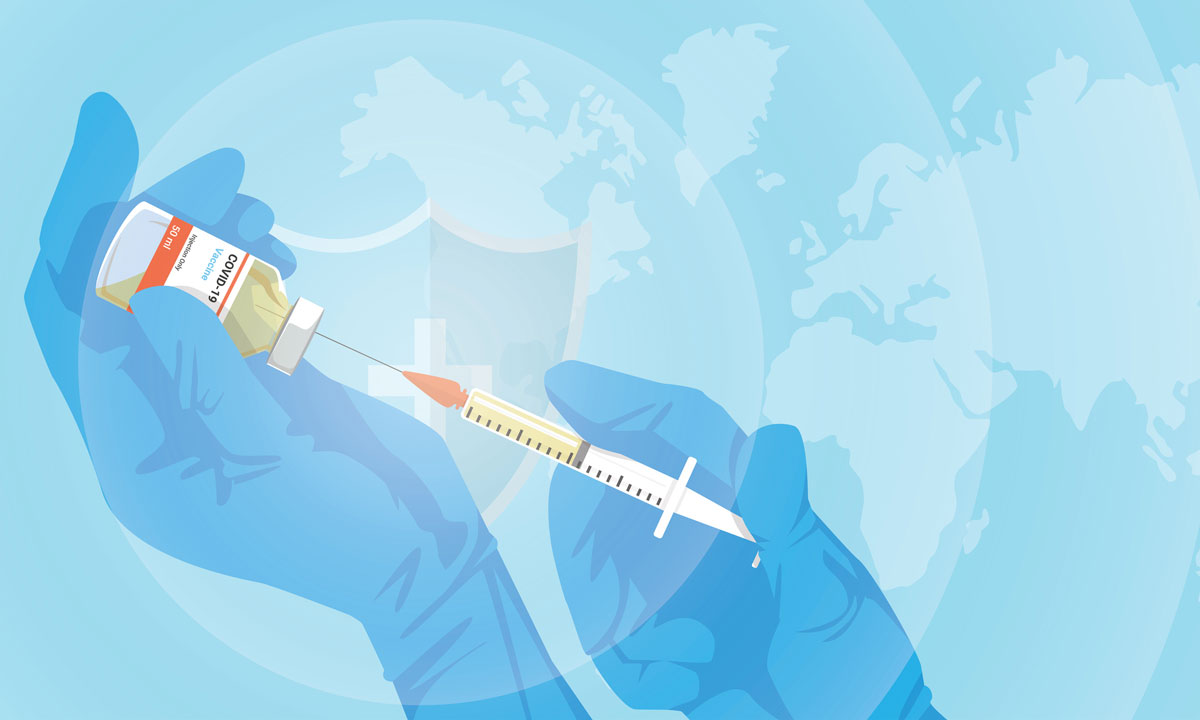
Since the beginning of the COVID-19 pandemic, laboratory testing has been vital to the study and control of SARS-CoV-2, the virus that causes COVID-19 infection. Now that vaccination is becoming more widespread, how will the role of laboratory testing for the diagnosis, study, and evaluation of COVID-19 change?
Diagnostic laboratory testing remains important for detecting active COVID-19 infection in vaccinated, partially vaccinated, and unvaccinated individuals. “Diagnostic assays that detect active infection will continue to be clinically useful because a vaccine does not guarantee that you won’t get infected,” said Julio Delgado, MD, executive vice president of ARUP Laboratories and chief of the Division of Clinical Pathology at the University of Utah.
Although the vaccine is not guaranteed to prevent infection, it has been shown to greatly decrease the severity of COVID-19 in individuals who receive it. “Even postvaccination, testing will still be necessary to identify individuals who are infected with SARS-CoV-2 and could potentially spread the disease to others,” said Delgado. The vaccination status of an individual is not anticipated to negatively impact the accuracy of the nucleic acid amplification tests (NAATs) used for diagnosis.
The clinical utility of serology testing is more uncertain. Serology testing is used to detect antibodies to SARS-CoV-2 infection. The clinical utility of serology testing in unvaccinated people is generally thought to be low, Delgado explained. “Knowing that a person had a SARS-CoV-2 infection in the past may be incredibly important for epidemiologic study or contact tracing, but it does little to impact the clinical care of the individual.”
In contrast, serology testing for vaccinated or partially vaccinated people has the potential to provide clinically useful data, such as information about immune response in immunocompromised patients, disease spread, and data that will eventually inform reference ranges. There are, however, several testing challenges, such as the lack of immunologic information and assay standardization, which must be addressed with further study before it is possible to extract this useful information from serology testing results.
One such testing challenge is the potential for cross-reactivity between the antibodies generated through natural infection and the antibodies generated in response to a vaccine. In unvaccinated individuals, the presence of these antibodies is indicative of previous infection. However, vaccines function by generating an immune response that mimics the body’s response to natural infection. Currently available vaccines (manufactured by PfizerBioNTech and Moderna) result in the generation of antibodies against the spike protein of SARS-CoV-2, so any serology assay that detects antispike antibodies will be unable to differentiate between antibodies from vaccination and those from natural infection. This challenge can be circumvented by knowing the type of vaccine an individual has received and selecting an assay with orthogonal targets.
“While we can get around this issue, the clinical utility of determining past infection remains questionable,” Delgado said. “The more interesting question is whether we can determine a person’s immunization status or protection status against COVID-19. In order to answer that question, we need more research about the immunology of COVID-19.”
A second challenge is that more serology test result data need to be collected and analyzed before results will be clinically meaningful. “For vaccine-preventable diseases, such as measles or hepatitis, serology is routinely used to determine whether a person has been vaccinated and has mounted a protective immune response by detecting and measuring the concentration of antibodies,” explained Dr. Patricia Slev, ARUP Immunology Division section chief and associate professor of pathology at the University of Utah.
“The same is theoretically possible for COVID-19 serology testing, but we don’t have enough data to define a threshold for protective immunity, so we cannot properly interpret whether or not a patient is protected from symptomatic disease or reinfection,” said Slev. Interestingly, data collected in clinical trials for both the PfizerBioNTech and Moderna vaccines show that 100% of patients who received a vaccine developed COVID-19 antibodies, but the level of antibody production varied from person to person. Because of this, serology testing to confirm seroconversion (antibody formation) postvaccination is likely not informative.
Additional serology tests are also needed to discriminate between the different types of antibodies generated by infection. “We need standardized assays that can differentiate between antibodies that are binding, meaning they bind to the viral target, and antibodies that are neutralizing, meaning they bind and inhibit viral function,” said Slev. Neutralizing antibody assays are becoming available, but there is much to study and standardize before scientists truly understand the immunologic properties of SARS-CoV-2.
“It is easy to see the many ways that serology may become common in the postvaccination era,” said Delgado. “There may be situations where we would like to confirm our vaccination status or show that our antibody levels are providing protection against severe infection.”
For now, laboratory testing remains a powerful tool for research as scientists continue to gather information to help understand SARS-CoV-2. “Things are changing quickly, and we are learning and adapting with every new discovery. It is our hope that, with these advances in COVID-19 research, ARUP and the laboratory medicine community at large will be able to grow and adapt to provide patients with the best care possible,” Delgado concluded.
Kirsten Meek, PhD, Medical Writer and Editor















